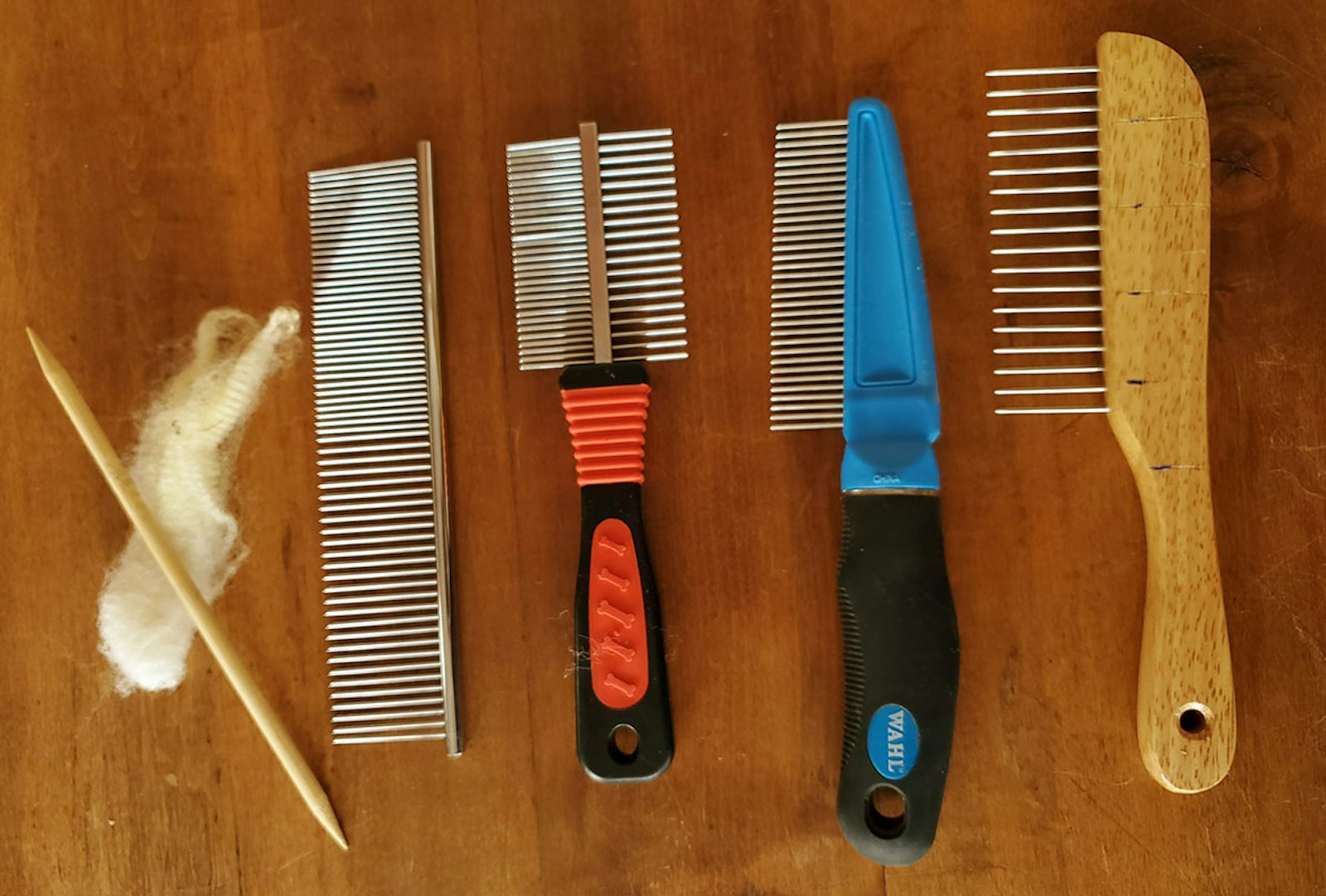Some fiber-prep tasks can be tricky, time consuming, and frustrating. In my daily work with fibers, I look for innovative spinning and wool-preparation tools to improve efficiency and comfort without losing pleasure. One of my favorite tools is an inexpensive dog comb because I can use it for several different steps when preparing fiber.
Types of Dog Combs
Dog combs come in different sizes and types. You could use one that you have close at hand; however, a medium-size, all-propose dog comb with two sets of teeth, one set with the tines spaced closer together and one with them spaced farther apart, works the best for my needs. I find combs with very fine teeth to be inefficient and ones that have widely spaced teeth don‘t open fibers as well but are helpful for pre-wash preparation (more on this in a moment).
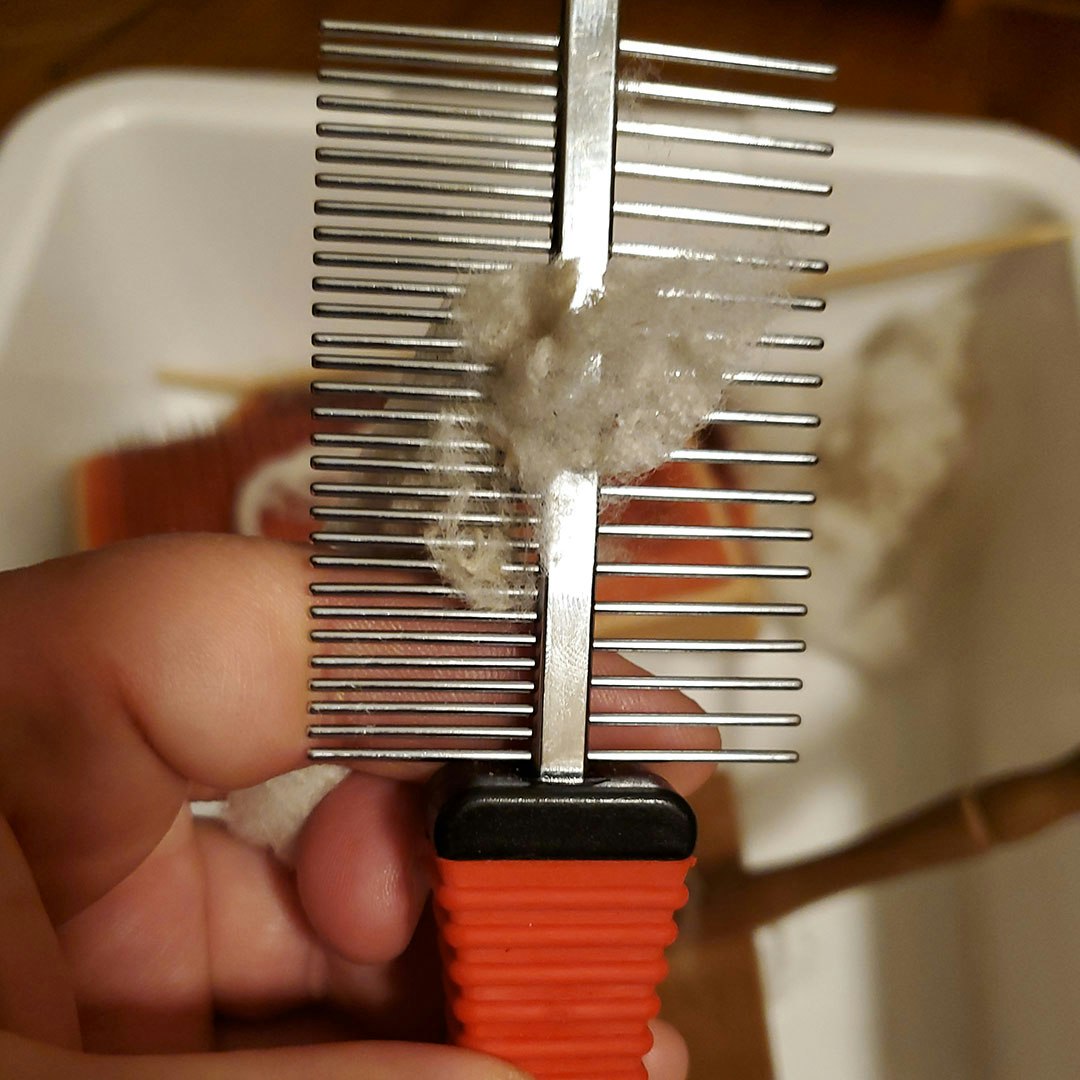
Marcelo‘s favorite dog comb has two sets of teeth.
Here are four ways I use dog combs to help me with my spinning prep.
1. Measuring Fibers
Marking helpful measurements, such as inches or centimeters, on the body of the comb helps me quickly sort longer fibers from shorter ones and measure my wool. I use a permanent marker for noting the increments on the body of the comb or adhere small pieces of removable tape for a more temporary notation.
2. Opening Locks
A wide-toothed comb helps open dirty lock tips for a better wash. Any comb with a single row of metal teeth with round-ended tines does this task well. To open clean fleeces, a comb with two different teeth spacings is ideal. I use the side with closer spaced teeth to open the tips of the locks and the other side to open the lock’s cut end.
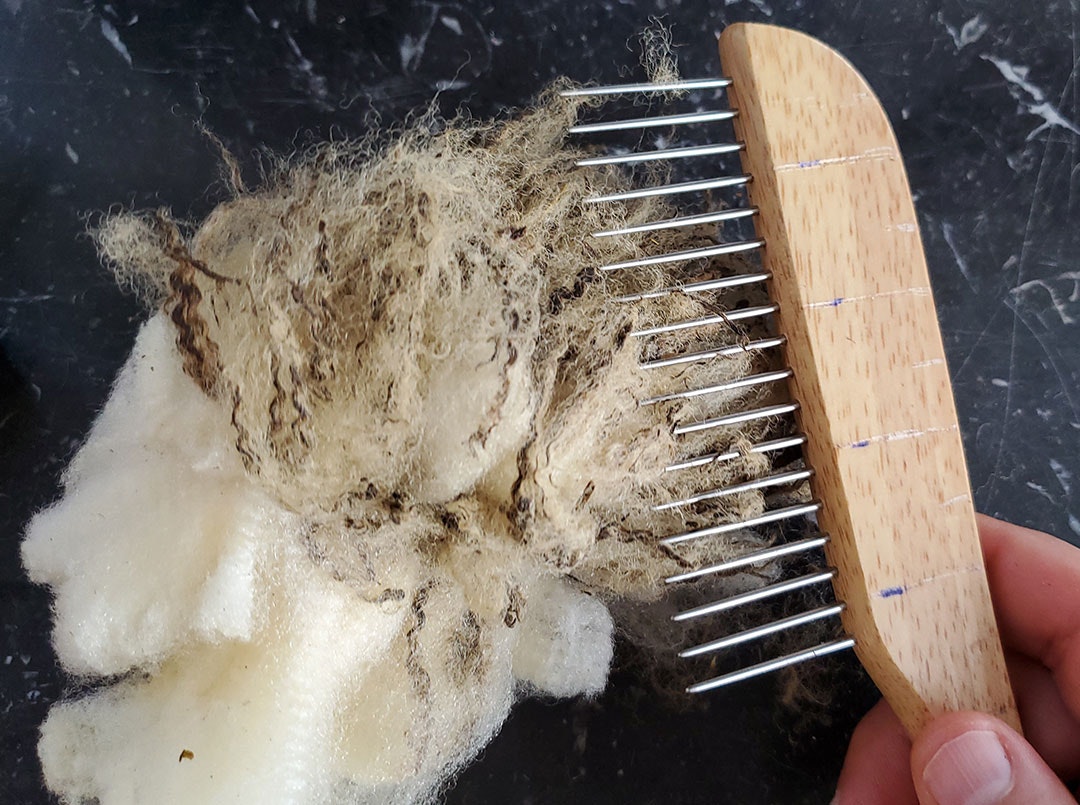
Marcelo opens unwashed locks with a dog comb that has tines that are set farther apart.
3. Combing Fibers
If you don‘t have a proper set of hand combs, you can use a dog comb to prepare small amounts of fiber. It might take longer, but it works well for medium- to long-stapled wool. I use a clamp to secure the dog comb to a board or table, and with my hands, I pass the fiber between the comb’s teeth, aligning the fibers. When I have enough combed fiber, I spin the fiber directly or diz it to make top. This preparation produces a smooth, lustrous, semi-worsted yarn.
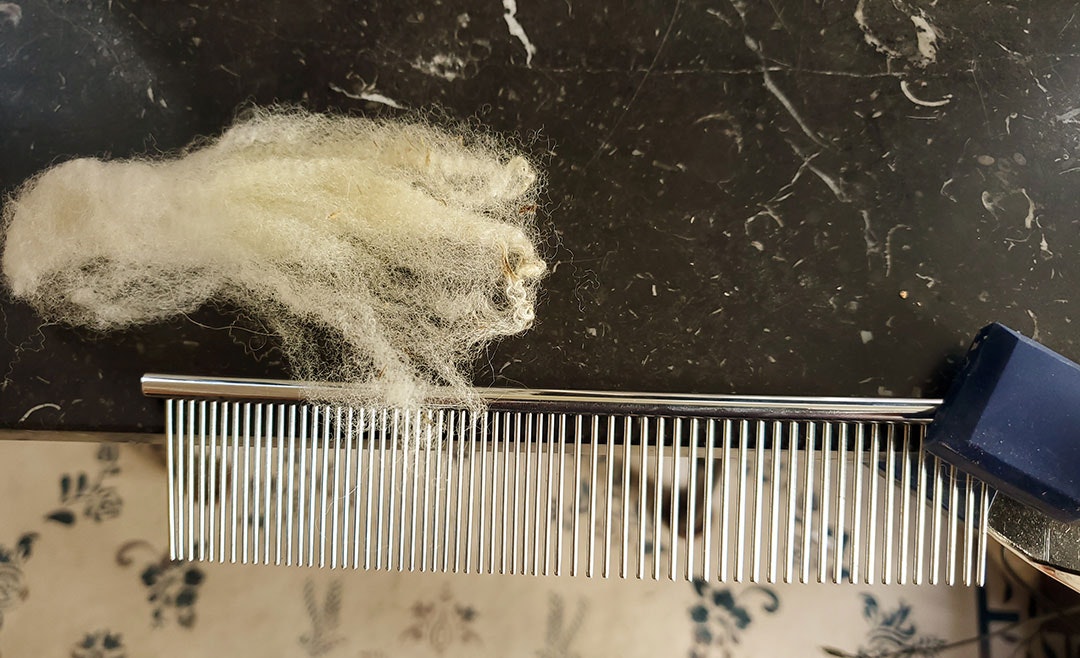
Marcelo often clamps his dog comb to a surface, such as a table, so that both hands are free to work with the fibers.
4. Mixing Fibers and Colors
The dog comb is a great tool for making quick samples and tests of fiber and color blends. I work in the same manner as described above in #3 but layer different fibers and colors on the dog comb as I work.
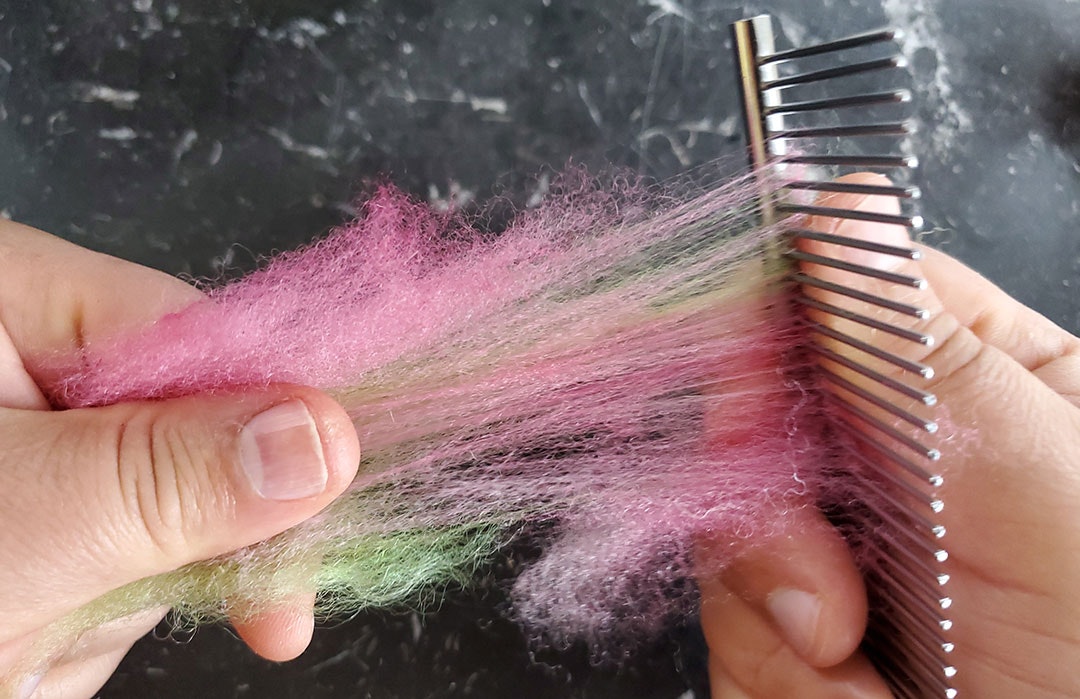
Make quick samples of fiber and color blends with the versatile dog comb.
A dog comb is a great addition to every spinner’s toolbox. This simple, inexpensive, and multipurpose device can become a favorite fiber-preparation tool.
Passionate about fiber and curious by nature, Marcelo R. Martins decided to take his craft to the next level by enrolling in a master spinner program. He spins, knits, and shares his passion and knowledge of fibers through a blog and live presentations on his YouTube channel, MakelooStudio. He advocates the importance of forging links among artisans, local producers, and the environment.

